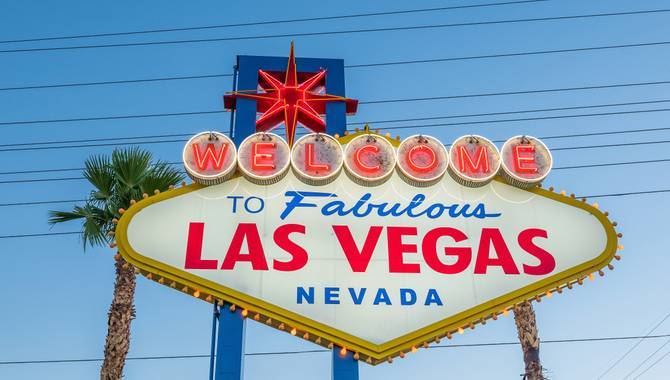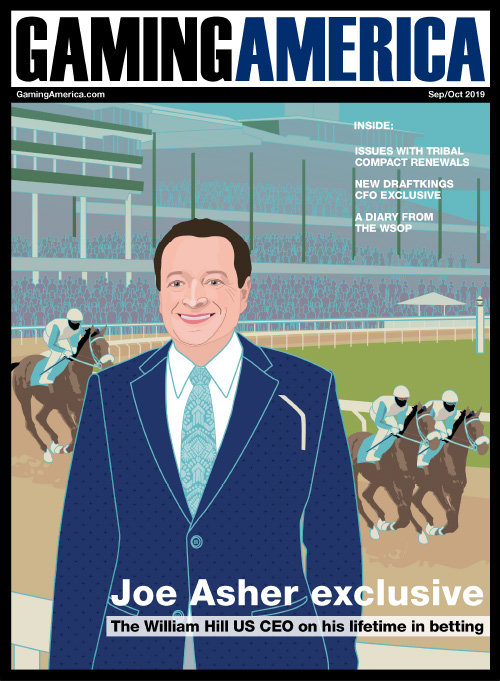
It was exactly a decade ago when I began to look at Las Vegas as anything more than a vacation destination. Fueled by curiosity and a commitment to an approaching MBA thesis deadline, I began a journey that started with researching competitive advantage in casino resorts, and resulted in me relocating to southern Nevada to put theory into practice.
For this G2E Edition of Gaming America, and a decade since formulating initial thoughts about Las Vegas casino resorts, I reflect on the first four recommendations I delivered to
the industry and revisit the elements that are still relevant.
Develop a customer strategy
In 2009, Las Vegas was at its lowest ebb. Visitation was down, gaming revenue was down and the response of the resorts was to cut costs. What seemed evident was, with few exceptions, all resorts seemed to be targeting the same customers. MGM Resorts even operated its entire business model on the basis of internal competition – for the same customers.
The response advocated was to ask the following questions: Who are our target customers? Who are our actual customers? What is our customer strategy? Is our strategy aligned with our customer segment? Are we focusing on what our customers want?
What I wrote…
The rationale is clear – if the proposition offered does not align with the target customers, a review of the strategy is necessary. Where there are multiple segments targeted in an overall strategy, this can be defined. Where the strategy is price leadership, an urgent change is necessary or the operator will lose market position. The costs associated are relatively small, unless there are actions required to rebrand and capex required.”
In this area, the transition seen in Las Vegas is pronounced. Encore Las Vegas, The Palazzo, Aria and The Cosmopolitan all opened around this time, but to a large extent, it was only the latter which had a clearly defined target customer that was accretive to the enterprise, with a clear strategy and a curated offering to meet the needs of that customer. Of these additional 12,000 units of room inventory, the incremental revenue produced has fallen short of expectations, with only The Cosmopolitan, despite the initial performance apprehensions, proving transformative.
The theory behind this remains true; it is not the hotel rooms, size of casino, theme or any of the multi-billion dollar investments that are vital for performance; the strategic asset is the customer and having a focused customer strategy has proved the key to achieving
market success.
Deliver to your customers’ expectations
What I wrote…
This research points to the shortfall between customer expectation and customer experience. If functional loyalty is to be achieved, the resorts must be competitive within their defined customer sector and the resort operators must know what is going on within the rival resorts. There is minimal financial cost, but a high time cost.
Ask:
Do our experiences meet the expectations of our customers?
Look at the competitors in the same segment.
Compare our offering vs. the market segment (based on identified criteria relevant to the target sector). Resort management should follow their own strategy.
The greatest realization of the operators over the past decade is that if you build it, they will come - but only for a while. Something new doesn’t guarantee success. The second recommendation of my first research was that resorts need to deliver on their promises.
For example, on 16 December 2009, when Aria opened its doors as a casino resort for the next generation, instead of a transformative offering, it was more like the greatest hits of MGM’s Las Vegas properties. Compared to the recently - opened Encore and Palazzo, the property was too dark, the elevators were too far from the rooms and the food and beverage options were just formulaic. The customer response was underwhelming.
A decade on, the property has been transformed.The influences were not the existing portfolio, but the competitors; not those in Las Vegas, but in Los Angeles, New York and other metropolitan urban centers.
The lesson was learned when the Monte Carlo pivoted to the Park MGM. The NoMad, a New York and LA staple, became the hotel within a hotel at The Park. Best Friend and On The Record by the on-trend Houston Brothers were adopted from LA, Bavette's came from Chicago, The Crack Shack has units across California and is new to Nevada, while Eataly was brought to Las Vegas. Other than Starbucks, everything here was new to market, offering a clearly-differentiated product from the competitive set.
A drive to innovate
Selling the same product, at the same price, at the same time, to the same people, at the same place, offers zero opportunities to drive competitive advantage through product differentiation.
Back in 2009, almost every casino floor on The Strip was homogeneous. Same dice, same tables, same slots. Any innovation in gaming was made by the suppliers and were then distributed across casino floors without any exclusivity.
What I wrote…
Operators need to foster a culture of innovation. This can be achieved by encouraging co-operation (particularly in multi-resort operators) rather than competition. Introduce ideas exchanges (internally). Skill up to implement and test ideas – look globally and outside the gaming industry.
There is no doubt casino resorts have innovated more in the past decade than in any other.
The use of technology and database management systems are now par for the course. Food and beverages, amenities and nightlife have undergone transformations and most importantly, almost unthinkably, the casino floor has started to innovate. The Linq renovation is a must-see for all G2E delegates, to see what the casino floor of the future will look like. This is exactly what the industry needed a decade ago and this is what it is finally implementing.
Outside-the-box customer engagement
Of all the recommendations made a decade ago, this is the main area where casino operators are failing still.
Nearly 60% of customers that come to Las Vegas keep an eye on what is going on in Las Vegas when they are not there, but other than push advertising and sales, how are operators engaging?
Celebrity endorsements are as old as Las Vegas itself, but the likes of The Real World – a reality TV show – is frequently referenced in generating market awareness of The Palms. Caesars Palace was reinvented via The Hangover, Ocean's Eleven brought the Bellagio Fountains to a global audience and both Jason Bourne and James Bond have enjoyed Las Vegas by night.
Instagram and social media imprints have grown exponentially in the past decade (only the Luxor had a Twitter account), but Las Vegas resorts have proved very stodgy in using new media to engage and sell to their markets. Podcasts and channels have been left to amateur content providers, but some of these have generated large followings. The industry needs to shape up, especially as sports betting proliferates across the US and engagement with betting becomes a daily activity.
A decade in review
Ten years ago, if you had offered me odds of living in Las Vegas, working in casino resort development and strategy, the only longer odds on the book would be Leicester City winning the English Premier League.
What the experience has taught me is there are great benefits to be had by encouraging insights from outside the industry, synthesizing the multi-disciplinary learnings and experiences and bringing value to the industry. What it also tells me is10 years feels just like yesterday – and there is a lot of work still to do.
Oliver Lovat leads the Denstone Group, which offers strategic advice and consultancy on customer-facing, asset-backed investment and development, with a focus on casino resorts. He is a Fellow of the Royal Institution of Chartered Surveyors and visiting faculty at Cass Business School in London. He lives in Las Vegas.

